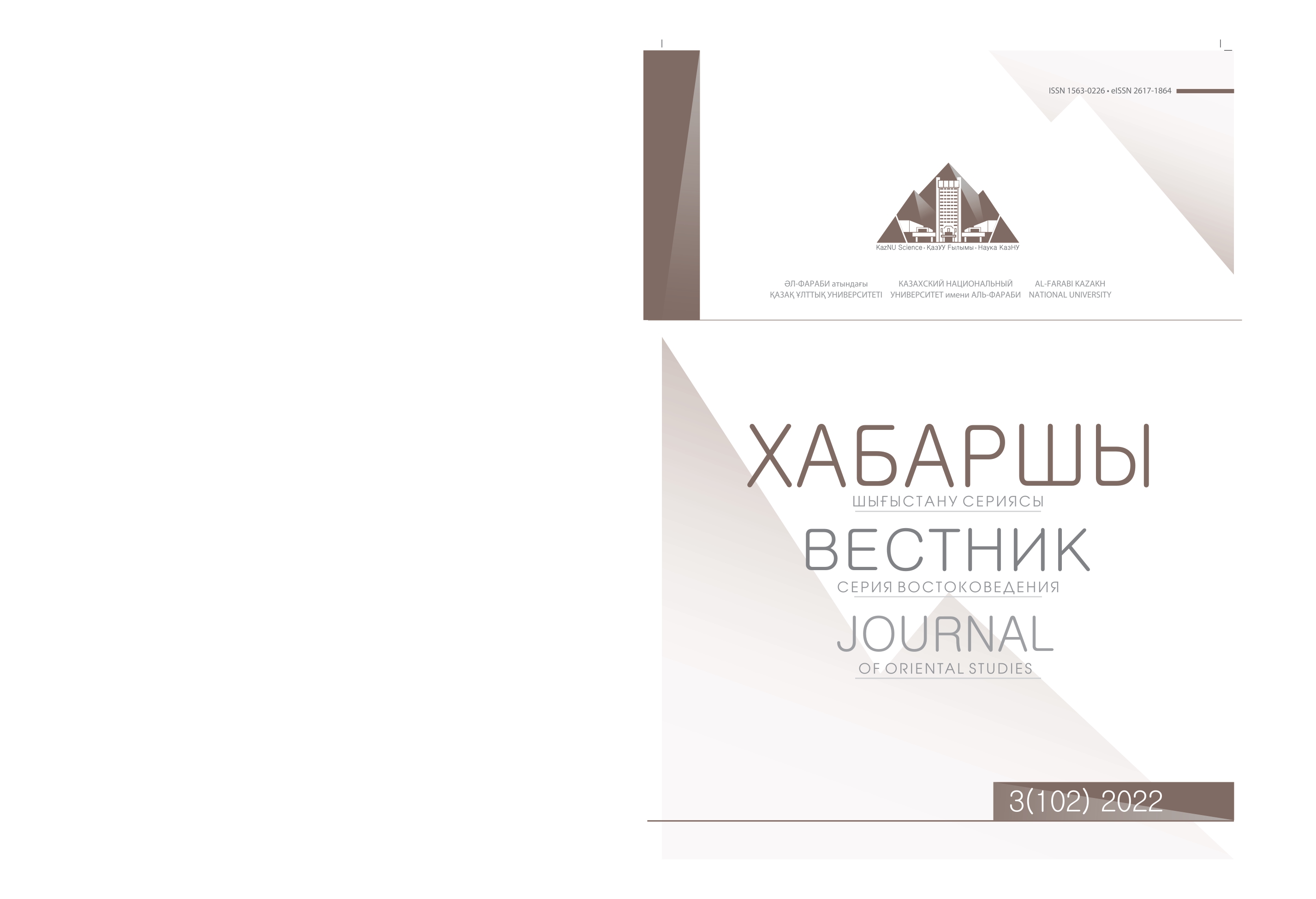The study of medieval kipchak-arabic dictionaries
DOI:
https://doi.org/10.26577/JOS.2022.v102.i3.03Abstract
It is known that handwritten monuments to the Kazakh people are stored in the archives and libraries of the world. It is known that many of these monuments have been studied by European, Russian Orientalists and other foreign and domestic Orientalists-Turkologists. One of these handwritten monuments is a valuable relic of languages belonging to the Kipchak group, including historical phonetics, vocabulary, morphology of the Kazakh language of the XIII-XIV centuries. The Mamluk Kipchaks in Egypt wrote the work "Tarjuman...". This work is a Kypchak-Arabic dictionary written with the aim of teaching the Arabs the Kipchak language. When comparing the works of scientists who studied and translated the work, there was a lack of consistency in the transcription and meanings of some Kipchak words. We, in this article, still compare the Kypchak words in translations and research on the work "Tarjuman...". By studying the interpretations in Arabic given in the original, we reveal the meaning and find out the reasons for giving different meanings to Kypchak words in works and translations.In addition, the transcriptions and meanings of various words of Kypchak are unique.Studying the Arabic interpretations of the manuscript, the Turkic root of some Arabisms is revealed, the Turkic equivalent of which is forgotten in the Kazakh language.
Keywords. "Tarjuman ...", Kipchak language, Arabic language, Kipchak-Arabic dictionary




